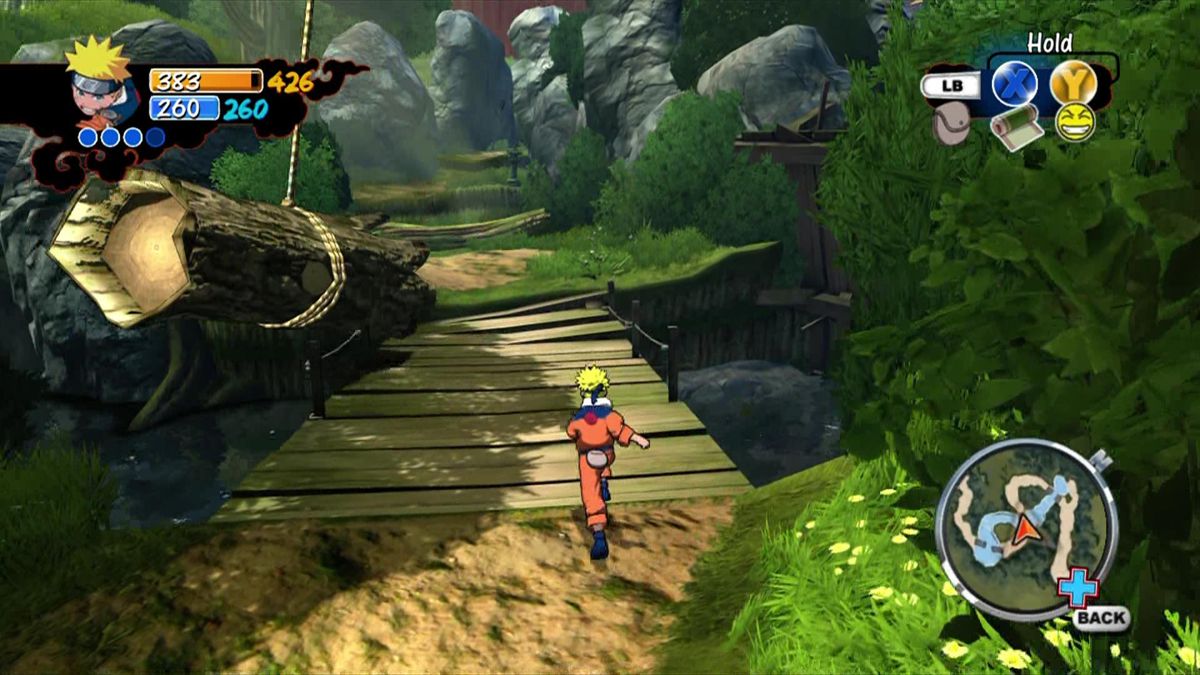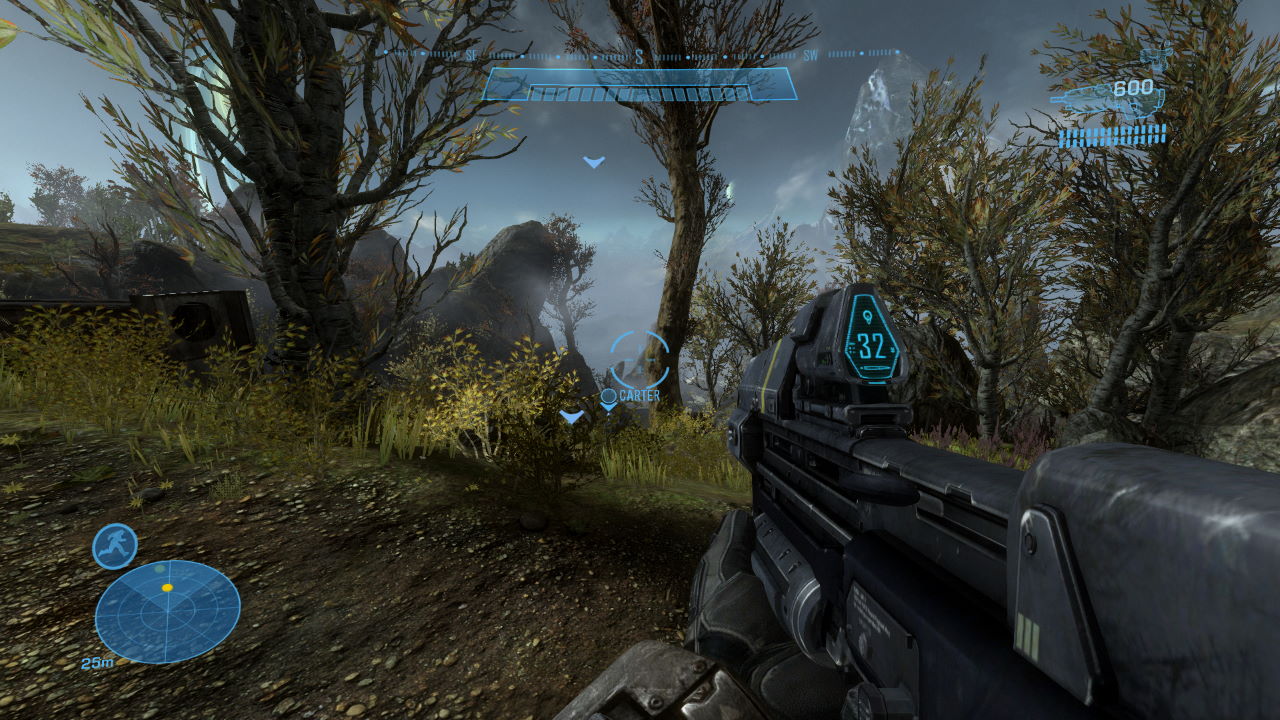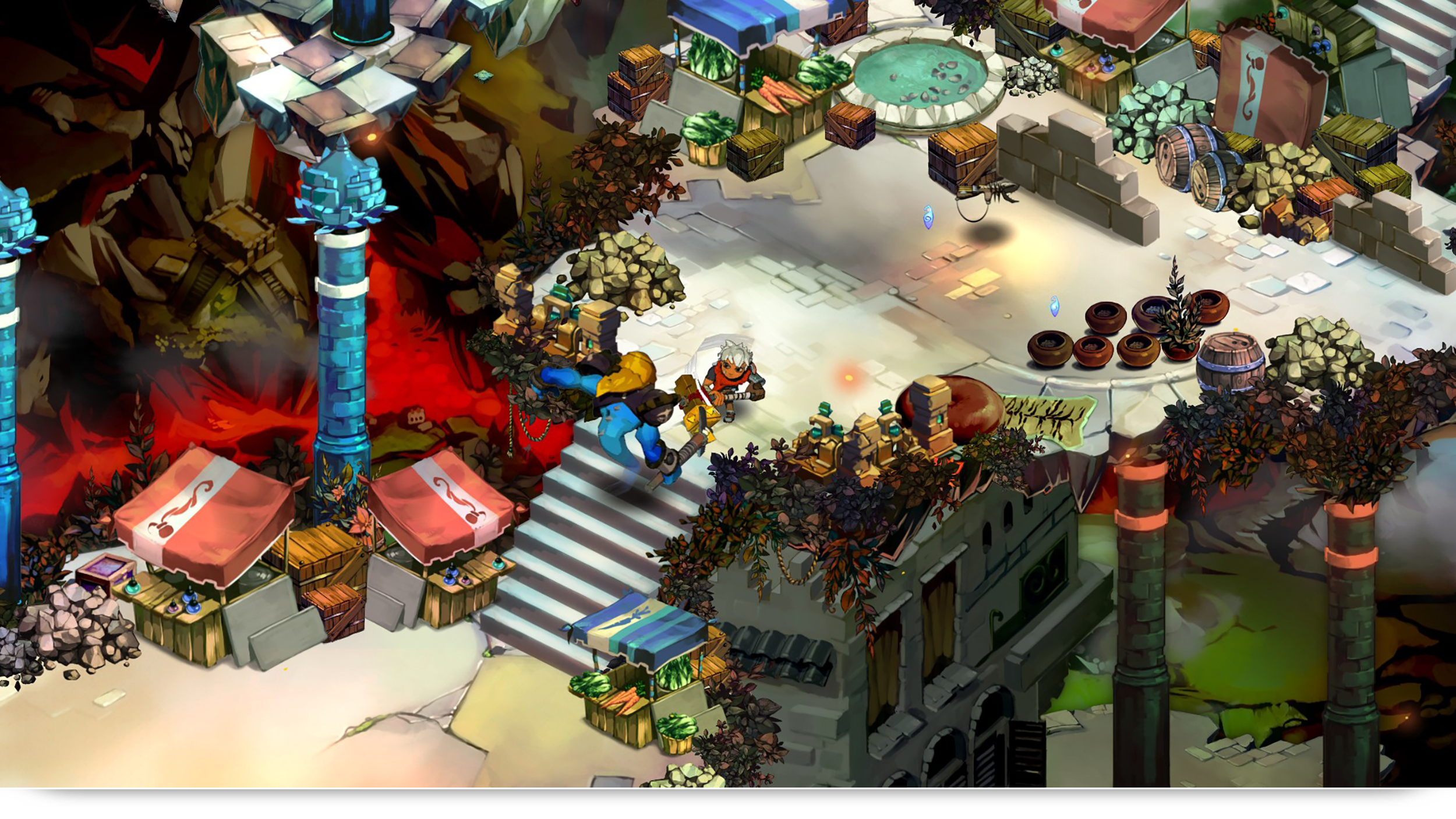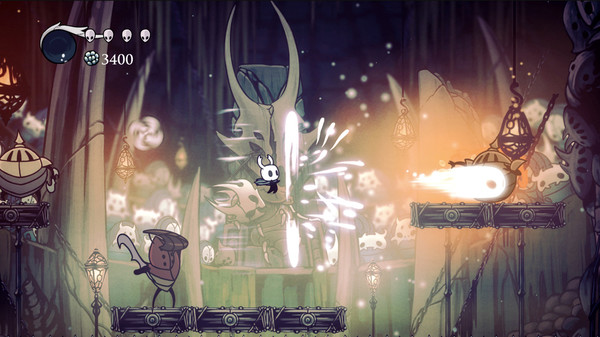Naruto: Rise of a Ninja
Publisher: Ubisoft Developer: Ubisoft Montreal Platform: Xbox 360 Release: 2007 Players: 1-2 Genre: Adventure / 2D Fighting Rating: 7.8 \ 10.0: Satisfactory

Above is Naruto exploring the outskirts of the Hidden Leaf Village.
Licensed games are well known for typically being half-baked cash grabs, and licensed games based on anime are no different. Of course, there are occasional exceptions, and in an era where most major anime games are middling Bandai Namco-published arena fighters, I was intrigued to learn of an older title that broke the mold. Naruto is far from my favorite anime and manga franchise, but it's one that could suit various game genres and has unfortunately been limited almost exclusively to fighting games. When I discovered that Ubisoft Montreal had developed two action-adventure Naruto games, I was eager to try them.
Naruto is the story of the titular Naruto Uzumaki. When the Hidden Leaf Village was attacked by the Nine-Tailed Fox, the village leader, the Fourth Hokage, sacrificed himself to stop the beast and sealed it within the body of an infant Naruto. Twelve years later, left orphaned by the attack and feared by the villagers due to the fox stored within him, Naruto is a trouble-making ninja who craves even negative attention and dreams of one day earning respect and becoming the village Hokage. This game adapts the first 80 episodes of the anime, which are primarily dedicated to Naruto's training and his first missions with his teammates, Sakura Haruno and Sasuke Uchiha.
Naruto is the story of the titular Naruto Uzumaki. When the Hidden Leaf Village was attacked by the Nine-Tailed Fox, the village leader, the Fourth Hokage, sacrificed himself to stop the beast and sealed it within the body of an infant Naruto. Twelve years later, left orphaned by the attack and feared by the villagers due to the fox stored within him, Naruto is a trouble-making ninja who craves even negative attention and dreams of one day earning respect and becoming the village Hokage. This game adapts the first 80 episodes of the anime, which are primarily dedicated to Naruto's training and his first missions with his teammates, Sakura Haruno and Sasuke Uchiha.
Rise of Ninja's gameplay is split into three distinct styles: Exploration, combat, and minigames. The main hub is the Hidden Leaf Village, which has been faithfully recreated, but condensed to prevent it from being overwhelming to explore. Here you can accept missions, purchase various upgrades, spar with Naruto's teammates and mentors, and collect the many hidden coins scattered throughout. Each story mission is set in a different area of the Land of Fire, only some of which are taken directly from the source material, and several side quests are set in each of these locations. At the start game, the majority of the villagers you encounter will shoo you away, but as you complete missions and build up your reputation, less and less of them will be repelled by your presence. Garnering the respect of the villagers and being able to navigate the area more swiftly as I progressed was a very gratifying feeling.
Both the main and side missions mainly consist of travelling to a destination, fighting several bandits and hopping between trees along the way, gathering items or racing through rings under a time limit once you arrive, and warping home. The story missions tend to have sequences of exploration in which you can gather coins to spend at the village, a small amount of clunky platforming, and conclude with a plot-related battle. Having to travel to the same places, hop across the same trees, and fight the same enemies wore thin after awhile, and although I did find these missions mostly enjoyable, I am grateful the game ended when it did, as I was fast approaching the point of boredom. There are also a variety of minigames that can be played within the village to earn more experience and money. These include delivering ramen to various customers in the village with a strict time limit on each delivery, racing around the village, and playing hide-and-seek with Naruto's mischievous sidekick Konohamaru. The latter of these games is extraordinarily easy, but the delivery and race minigames got progressively more difficult, and I was impressed with the number of meticulously designed paths that were created within the village to facilitate these activities without making the Hidden Leaf Village feel too much like an obstacle course rather than a town.
Although this game may seem accessible to those who haven't watched or read the series, its plot would be nearly incomprehensible to such people. Only key events from the first 80 episodes are depicted, and any moments that do not considerably advance the story are either skipped or only shown briefly in edited-down clips from the anime. A vital plot point that occurs during the final adapted arc is even saved for a post-credits scene.These changes are understandable, as most of this content either would be difficult to adapt into unique gameplay or would cripple the pacing by filling the game with nonstop fights. The gameplay dedicated to events that are explicitly shown in the series takes up only a couple hours, so original content has been added to make the main quest sufficiently lengthy. Unfortunately, these filler missions feel like borderline side quests, and mainly revolve around travelling to a location and dealing with some bandits or fetching items. These missions are also the only interactions that Naruto, Sakura, and Sasuke have outside of a handful of story missions, which is an unfortunate missed opportunity to have interesting original content.
The combat, while far from amazing, is satisfactory enough to remain engaging for the whole duration of the game. The fights have the structure of a traditional 3D fighting game, being exclusively one-on-one and taking place in a small arena. There is a basic list of combos that expands as you progress. These combos, in addition to dealing significant damage when executed, knock enemies down, and give you a chance to perform your Jutsu. Each playable character has three Jutsu they can use, but Naruto is the only character who is usable in the story mode, so this number can feel quite limiting. Some have immediate effects, such as disorienting your opponent or granting a temporary damage boost, but others deal damage via a brief minigame that usually involves timed button presses. Combat feels limited in the early game due to Naruto only having access to low level combos and Jutsu, but as you level up your abilities and encounter enemies who have access to Jutsu of their own, the dynamic of battle gets much more interesting. Finding the right time to use my abilities and interrupting enemies from using theirs was satisfying, and the appeal only began wearing thin for me once I was far into the game. Another notable touch is that the framerate is increased from 30 FPS to 60 during fights, a greatly appreciated touch that improved the flow of combat.
Rise of Ninja's presentation is great, held up mostly by its excellent cel-shaded visuals. The colors are vibrant, the lighting is excellent, the textures are detailed without clashing with the anime style, and the water is some of the prettiest I have ever seen in a video game. My only gripes with the graphics are with the character models, which for some reason are on par with sixth-gen games in quality, and the generic original enemy designs, which clash with Naruto's art style and look as if they were from another series entirely. The anime has no shortage of original filler characters that, despite often looking generic, fit the look of the series, so this issue perplexes me as well. The soundtrack mostly consists mostly of iconic tracks from the anime that are used to great effect, as well as ambient original tracks that suit style. I'm unsure if this applies to the Japanese audio track, but almost every voice actor from the English dub of the anime reprises their role for this game, sounding as good as ever. The only notable exception I could notice is Jiraiya, whose fill-in actor is rather unfitting, and whose performance is only made worse when contrasted with the anime clips that are often used in place of in-game cutscenes, in which his original actor can be heard. The voice acting is solid overall, and I was especially surprised to find that almost all of the dialogue from the generic villagers was voiced, a detail that even full-fledged triple-A titles sometimes omit.
Rise of a Ninja isn't a must-have title, but it is a commendable effort, especially given the time of its release. Despite its flaws and repetitive nature, its fun gameplay and strong presentation make it worth checking out for fans of the franchise.
Ups
Entertaining minigames
Satisfying progression
Engaging combat
Gorgeous visuals
Mostly solid voice acting
Satisfying progression
Engaging combat
Gorgeous visuals
Mostly solid voice acting
Downs
Highly condensed story
Underwhelming original story content
Activities can become very repetitive
Underwhelming original story content
Activities can become very repetitive
ESRB: T Content: Blood, Suggestive Themes, and Violence Price: Varies by seller*
*Most likely as a result of expired licensing agreements, this game is not available digitally and can only be purchased used from third parties. I was able to acquire my copy for about $20, but prices will vary by seller.
*Most likely as a result of expired licensing agreements, this game is not available digitally and can only be purchased used from third parties. I was able to acquire my copy for about $20, but prices will vary by seller.




